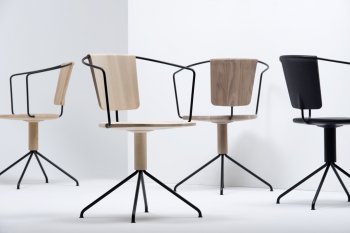Image acquired from: http://pirwi.com/english/Products/field/
You can see why I feel it's a shame that most of the designers on the internet have used the router in a way that doesn't express its capabilities to a full extent. The furniture that people have created is wonderfully beautiful, but it just seems a shame that it hasn't been used in a meaningful way to create new stuff. Utilizing the stacking technique to create pieces of furniture is also an incredibly wasteful process that doesn't actually express the potential of the material. In my mine the material is only a means to an end, and serves out its life as small piece as part of a much larger team of pieces.
Image acquired from: http://www.woodfordtooling.com/craftpro-router-cutters/
These joins on the other hand turn the material into much more interesting pieces of furniture. The expression of what the material is capable of and how it can be made beautiful is actually really pushed here. The skill aspect can be transferred to the machine here, with the pure creation of the design being transferred to the designer. The material variation serves as an aesthetic choice, but also a very functional tool. The join is often a point where a piece of furniture is most likely to fail, and as a result, a lot of different types of strong joins have been developed to compensate.
Image acquired from: http://www.skin-futurematerials.com/case-study/dukta/
Using the inherent properties of the timber as a partially malleable material is a really awesome way of creating a material that transcends its original properties and forms. The new capabilities offer something new, as well as allowing the material to be more interesting aesthetically and physically. The bendiness of the timber is something that goes well beyond what we traditionally associate with timber of that sort. By utilizing the CNC process, the timber now has a new properties that in a dramatic sense, brings it back from the dead.
Images acquired from: http://www.dezeen.com/
This table is a beautiful expression of what the CNC router is capable of. The tables joins highlight a variation in the look of the same material, which is a really interesting aspect. However, the really interesting aspect is the highlighting of the joining process, which is something that is either a particular form (dovetailing, mortise & tenon), or designed to be hidden from view. The highlighting of the joins showcases the precision of the CNC router, and at the same time, doesn't try to impose any sort of shapes onto the CNC process. The CNC process and the cutters used means that sharp internal angles aren't a possible outcome, and the creator of the table has made this a considered design choice. The joins utilise this rounded shape to great effect, and it gives the table a certain character and quirk that it otherwise doesn't really have.
















.jpg)
